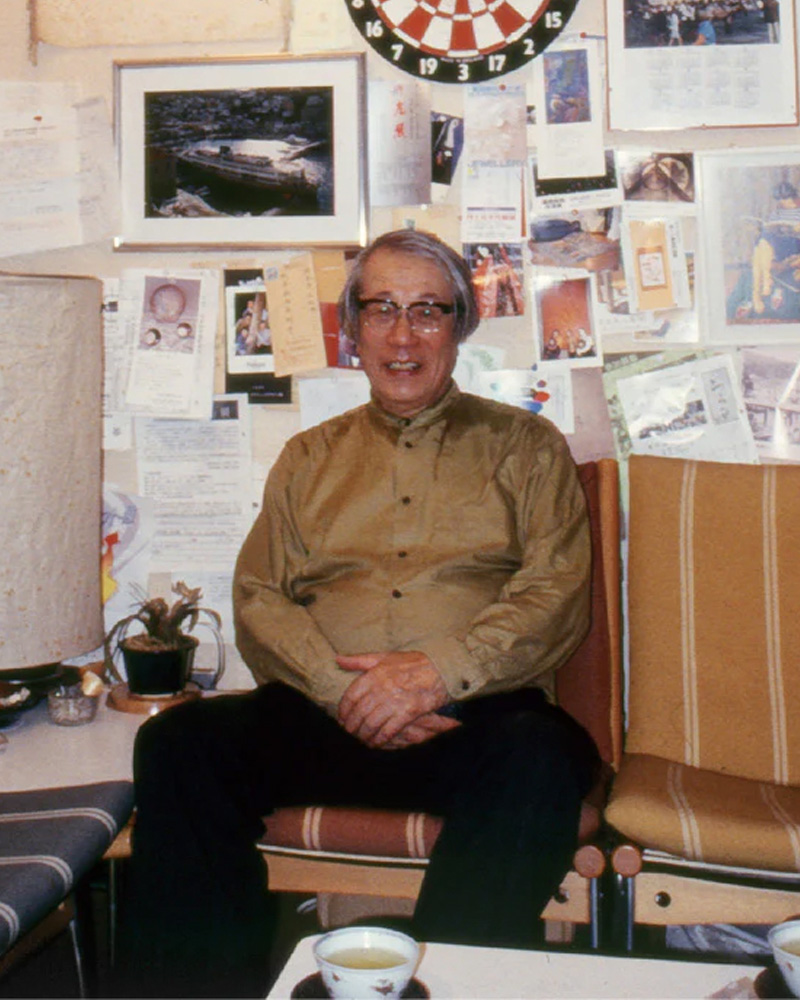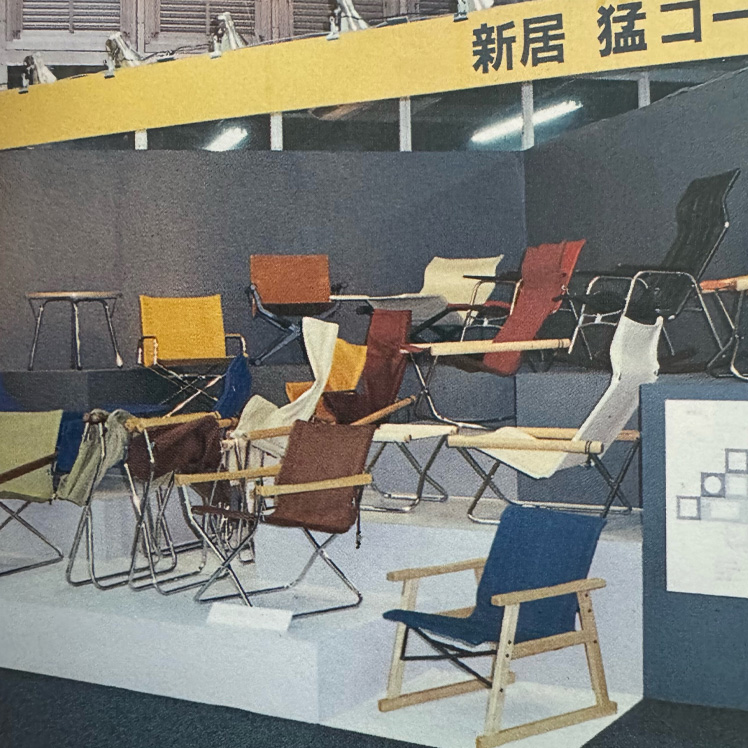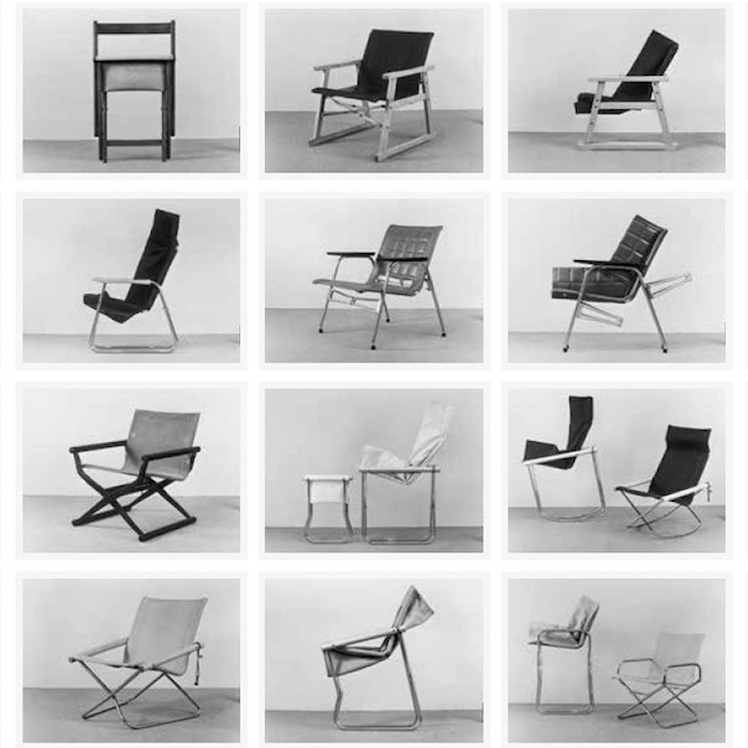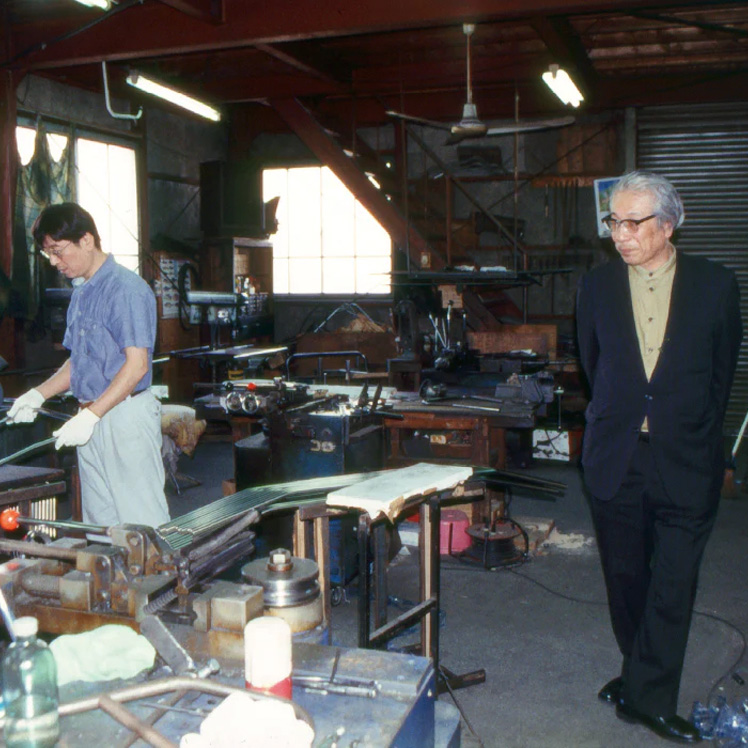Side Gallery
Side Gallery
WishlistFollow
Follow

Born in Tokushima, Nii Takeshi is a third generation member of a family who has run the Kendo Arms and Armor shop since the Meiji Era. He pitched in at the family business since he was very young. He usually carried a cart full of materials to embroiderers, sewers, and quilt makers. Since he was the first born son, he took over the family business when he graduated from junior high school (under the old system of education). He later said that his involvement in manufac- turing the armor not just selling it helped him to design his chairs.
In 1945, the GHQ of the US Military banned Kendo. Nii started to study woodworking at a vocational school. At that time, he was making wooden baskets for the home delivery of food from restaurants and shelves for pharmacies. Yet he remembered a director's chair that he had seen in movies and magazines before the War and he decided to make one for himself. This was the start of his chair making.
Functionalism from Northern Europe also influences him. At the age of 85, he still goes abroad to study and continues to produce high quality products less expensively.
If I was to try and select a chair that is designed purely by a Japanese designer with a strong Japanese background, I would choose Ny Chair X. Since the chair was first sold in 1972. 800,000 chairs have been exported overseas. People would be surprised to hear that a chair selected for the permanent collection at the Museum of Modern Art in New York and published in Art textbooks was actu- ally produced by a family that runs a Kendo Armory shop in Tokushima.
My friendship with Nii dates all the way back to 1960. When I was sent to the Royal Academy of Art in Denmark, I also studied wood- working technique at the Copenhagen City Technical Institute. Borge Jensen was an instructor at that institute. He also worked as a chief inspector at the Danish Furniture Control (a committee formed to control the quality of Danish furniture). Meister also used to work for a famous Danish furniture manufacturer. When I became a mediator for the Ministry of Mid and Small Sized Industry and Jensen, the Ministry invited him to Japan to visit various cities where furniture was manufactured and asked him to teach and give lectures for three weeks while I interpreted for him. During his visit, we went to Tokushima and I saw Nii's chair for the first time. It had aluminum legs and was light weight and foldable. I was stunned to find out that such a talented designer existed in Japan.
A year later. Nii came to my office and told me he was trying to decide what to name his chair. I suggested that he call it the "Ny Chair". The Danish word for "new" is "Ny" with the same pronuncia- tion as his surname Nii. He really liked my idea.
"I also want to design a real chair like Eames, to implement top level technology using plywood, plastic, and aluminum die-cast.
Although his work is too luxurious for me to reach for, my attitude and thoughts towards making a functional chair are not inferior to Eames'". - this was Nii's first comment published in an interview about the Ny Chair for the "Bijutsu Techo (A Pocket Book of Arts) in July 1966. I supported his idea of designing a comfortable chair without wasting money; this philosophy hasn't changed since 1950.
My five criteria for a good chair:
1 Comfortable to sit in
2 Strong and durable
3 Lightweight
4 Reasonably priced
5 Attractive, with a beautiful form
For many years, I have been studying the bend wood chair designed by Thonet in Vienna, and it possesses all five of those quali- ties. The Ny Chair also has those five qualities. In fact it has the 6th quality of being beautiful and stable even while folded.
Since the X shape of the Ny Chair expands as pressure is applied, the canvas material has the right amount of tension. It doesn't wear out and become loose like the seats of other canvas chairs. The sur- face of the chair legs that contacts the floor is U-shaped which dis- perses weight in order to reduce the wear and tear on carpeting and tatami mats.
It was through Nii's long hard work that these ideas were invent- ed. However, once his product hit the market, we started to see many chairs that copied his ideas. We see even more of those now that the designing rights of the Ny Chair have expired.
When a Japanese mail order company listed a chair that was very similarly designed to the Ny Chair in their publication, Nii took them to district court in Kyoto. He asked them to publish an announcement of their apology. However, the decision of the district court ruled that "under the Copyright Act, the term "Art" generally applies to pure forms of art which only have the purpose of being exhibited, viewed. and appreciated by the public." Nii's claim was rejected. He then went on to challenge the case in the high court in Osaka. He claimed that his design had a scientific copyright. However, the high court only repeated the same definition of the arts that the district court had given him.
The word "design" has been used worldwide, but there is no word of design acknowledged in the Copyright Act in Japan. Just as Nii does. I also regret Japan's lack of understanding on this matter.



ENQUIRE ABOUT THE DESIGNER